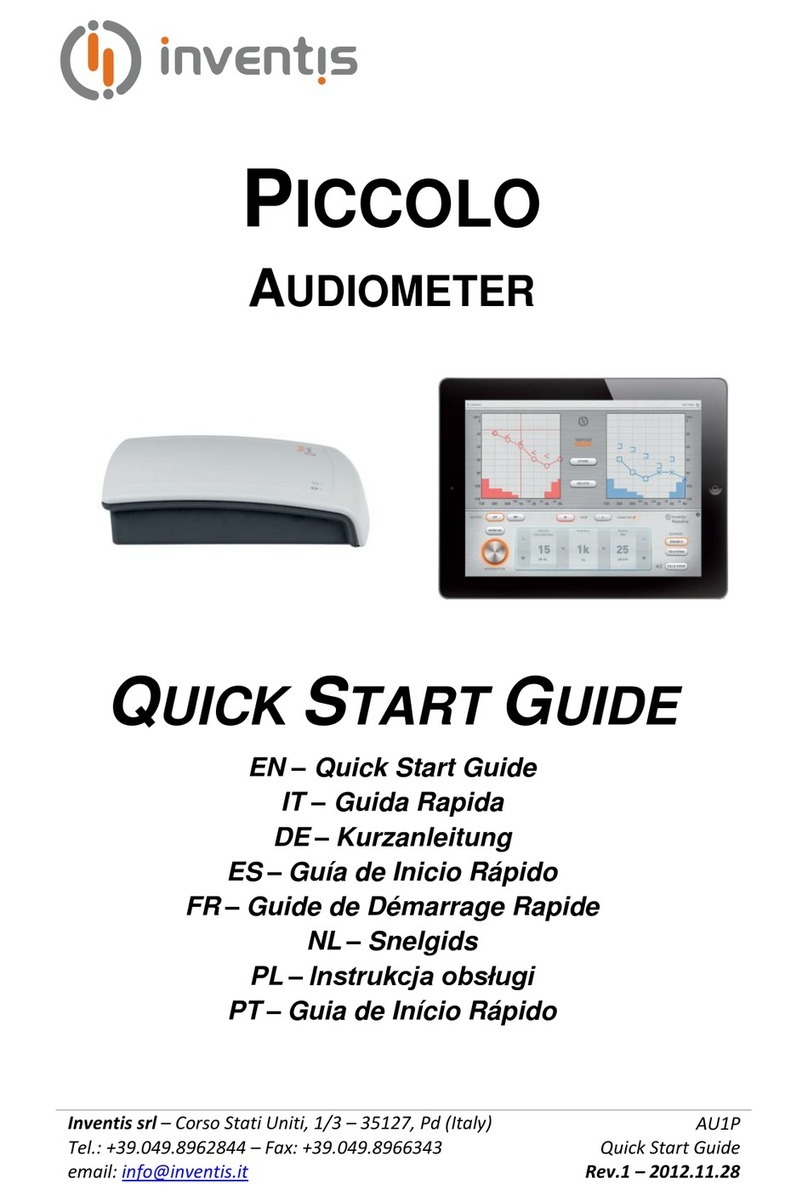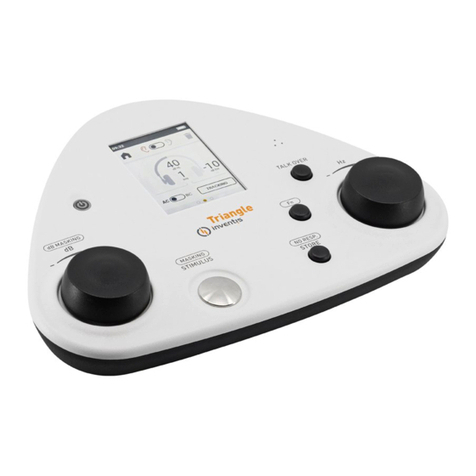The user of the device assumes full responsibility for any malfunction
resulting from improper use or operation, likewise from maintenance or
repair work performed by third parties other than Inventis s.r.l. or Service
Centres approved by Inventis. Inventis s.r.l. and approved Service Centres
will answer for the performance and reliability of the equipment only if:
1. adjustments, modifications or repairs have been entrusted to
persons authorized by Inventis;
2. the electrical system and earthing of the installation are in
compliance with the specifications of standards for electro-medical
appliances.
1.3 INTENDED USE OF THE DEVICE
Trumpet is a real ear measurement system. A real ear measurement system
allows the determination of the intensity of sounds reaching the tympanic
membrane of the patient. To this end it uses a couple of microphones, one
located at the level of the patient’s earlobe (the reference microphone), and
one inserted in the patient ear canal through a silicon tube (the probe
microphone). The operator, using the system, delivers to the patient sound
stimuli different in intensity and in frequency content, and measures the
intensity of the sound received by the two microphones. A real ear
measurement system is generally used to quantify the gain provided by a
hearing aid, when this is worn by the patient.
Trumpet can be also an audiometer. An audiometer is a device that helps the
operator in defining the patient’s auditory sensitivity by generating and
delivering to the patient sound stimuli of different types and intensities for
diagnostic purposes.
1.4 INDICATION FOR USE AND END USERS OF THE
DEVICE
Trumpet is intended for use by healthcare ENT professionals in hospitals,
ENT clinics and audiology offices or by hearing care professionals in
conducting hearing evaluations, in assisting in diagnosis of possible
otologic disorders, and in performing the verification of fitting of a hearing
aid.
There is no patient population restriction in the use of the device; always be
sure to perform an otoscopy before using the device.































